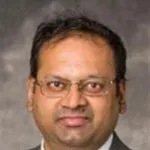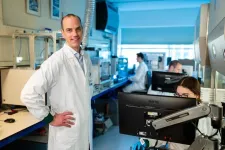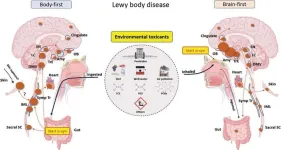(Press-News.org) As artificial intelligence is inevitably woven into the workplace, teams of humans will increasingly collaborate with robots on complex design problems, such as those in the auto, aviation, and space industries.
“Right now, design is mainly done by humans, and it’s based on their expertise and intuitive decision-making, which is learned over time,” says A. Emrah Bayrak, an assistant professor of mechanical engineering and mechanics in Lehigh University’s P.C. Rossin College of Engineering and Applied Science. “Usually, you’re not creating something totally new. You take something that works already, understand how it works, and make incremental changes. But introducing AI could make the process a lot faster—and potentially more innovative.”
However, best practices for integrating AI in a way that both maximizes productivity and the job satisfaction of the human worker remain unclear. Bayrak recently won support from the National Science Foundation’s Faculty Early Career Development (CAREER) program for his proposal to allocate portions of complex design problems to human and AI teams based on their capabilities and preferences.
The prestigious NSF CAREER award is given annually to junior faculty members across the U.S. who exemplify the role of teacher-scholars through outstanding research, excellent education, and the integration of education and research. Each award provides stable support at the level of approximately $500,000 for a five-year period.
Bayrak will explore the problem of dividing a complex task between human designers and AI from both a computational and experimental perspective. For the former, he’ll use models that predict how a rational human being would explore the design of, say, the powertrain in an electric vehicle.
“We know that decision-making is a sequential process,” he says. “People will make a decision, look at the outcome, and revise their next decision accordingly. In order to maximize the range of an EV, when humans consider the design of the powertrain, they have to make decisions about gear ratios, motor size, and battery size. These are all mathematical variables that we can feed into a model to predict what the next decision should be if a human is a rational person.”
AI, in contrast, makes decisions based on training data. Feed it data on good decisions regarding gears, motors, and batteries, and it can then estimate possible vehicle designs that will yield an acceptable range. AI could also use that knowledge to think about what the next design decision should be.
Bayrak’s model will also contain different human archetypes. For example, a person who trusts AI completely versus one who does not, and those who hover somewhere in the middle. The model will combine the mathematical variables that represent decision-making with the full range of archetypes to determine strategies for the division of labor between humans and AI.
Bayrak will then test those findings experimentally. Study participants will be asked to work together with AI to virtually approach the design of a vehicle.
“We give them a design problem and tell the people which decisions they’re responsible for making and which are the responsibility of the AI. They work together, and the goal is to collect the data and see if the computational results reflect what happens in the experimental findings. In other words, do designers act as predicted by the computational models or do those designers who don’t fully trust AI end up satisfied with the division of labor?” says Bayrak.
The ultimate goal, he says, is not to replace humans in the workplace. Rather, it’s to develop principles for how and to what extent AI should be integrated into complex design projects. And those guidelines will reflect different priorities—for example, a team may want to incorporate AI as merely an assistant, or it may want to give it significant responsibility. Teams may want to prioritize quick decision-making, innovation, or job satisfaction.
“The idea is that we’ll have quantitative evidence that reveals which practices work well to achieve specific objectives and which do not,” he says. “This work could potentially shape how organizations are structured in the future, and that is very exciting.”
About A. Emrah Bayrak
Alparslan Emrah Bayrak is an assistant professor in the Department of Mechanical Engineering and Mechanics in the P.C. Rossin College of Engineering and Applied Science at Lehigh University. He joined Lehigh in January 2024.
Bayrak’s research focuses on bridging computational methods and human cognition to develop human-computer collaboration architectures for the design and control of smart products and systems. He is particularly interested in developing artificial intelligence systems that can effectively collaborate with humans considering unique capabilities of humans and computational systems. His research uses methods from design, controls, game theory, and machine learning, as well as human-subject experiments on virtual environments such as video games.
Bayrak earned his MS and PhD in mechanical engineering from the University of Michigan and a BS in mechatronics engineering from Sabanci University (Turkey).
Related Links
Faculty Profile: A. Emrah Bayrak
NSF Award Abstract (# 2339546): CAREER: Problem Partitioning and Division of Labor for Human-Computer Collaboration in Engineering Design
END
Developing best practices for human-AI collaboration in engineering design
Lehigh University researcher A. Emrah Bayrak earns NSF CAREER award for project that could help determine how the engineering workforce can most effectively team up with artificial intelligence on complex design tasks
2024-04-11
ELSE PRESS RELEASES FROM THIS DATE:
Novel CT exam reduces need for invasive artery treatment
2024-04-11
OAK BROOK, Ill. – A new study showed that a non-invasive imaging test can help identify patients with coronary artery blockage or narrowing who need a revascularization procedure. The findings were published as a Special Report in Radiology: Cardiothoracic Imaging, a journal of the Radiological Society of North America (RSNA).
Doctors use coronary CT angiography (CTA) to diagnose narrowed or blocked arteries in the heart. A CTA exam receives a score from mild (0-1) to moderate (2-3) to severe (4-5). Patients ...
ERC Advanced Grant: 2.5 million euros for Tobias Brixner
2024-04-11
Many people are familiar with the principle of electronic excitation from their physics lessons: electrons in atoms or molecules absorb energy, typically from light, and rise to a higher energy level. This can have various consequences – in photovoltaic technology, the phenomenon ensures that electricity can be generated from sunlight.
Measuring electronic excitation according to scientific standards and investigating how excited electrons influence each other is a real challenge: “Electronic excitation and the subsequent processes take place extremely quickly, many things happen simultaneously“, explains Tobias Brixner, Chair of Physical Chemistry ...
Proud seafarers have strong doubts about the safety of autonomous ships
2024-04-11
The maritime profession is among the world’s oldest professions, and today’s shipping is based on long and proud traditions. Professional pride and commitment are often deeply ingrained in seafarers, and for many, the job is more of a way of life. New technologies will bring about major changes in the work of bridge officers, who have the ultimate responsibility on board Norwegian vessels.
Strong doubts about safety
“Bridge officers rely on automated systems that are already found on board, such as advanced autopilot systems. However, there is strong scepticism, almost mistrust, that increased automation and autonomous ...
People who use willpower alone to achieve goals, resist temptation, deemed more trustworthy
2024-04-11
People who use willpower to overcome temptations and achieve their goals are perceived as more trustworthy than those who use strategies that involve external incentives or deterrents – such as swear jars or internet-blocking apps – according to research published by the American Psychological Association.
“The knowledge that people can use external commitment strategies to overcome self-control problems has existed in some form for thousands of years. Since at least the time of Homer and Odysseus, the focus has primarily been on the efficacy of these strategies for the person choosing to engage ...
New study shows effect of socio-economic factors—housing, food, neighborhood—to predict diabetic patients’ risk of heart failure
2024-04-11
CLEVELAND—A recent study by Case Western Reserve University used national data from U.S. military veterans with diabetes to validate and modify a widely accepted model used to predict the risk of heart failure in diabetic patients.
The model, called the WATCH-DM score, is used to predict the likelihood of heart failure in diabetes patients within five years.
But because it overlooks the influence of social determinants of health‚ such as housing, food and a patient’s neighborhood, the researchers used a social deprivation index (SDI), a multi-component summary score, to adjust the WATCH-DM score.
The SDI, introduced by the Robert ...
Mapped: 33 new big game migrations across American West
2024-04-11
RESTON, Va. — A new set of maps that document the movements of ungulates was published today in the fourth volume of the Ungulate Migrations of the Western United States. The maps in this collaborative U.S. Geological Survey report series reveal the migration routes and critical ranges used by ungulates, or hooved mammals, in the western U.S., furthering scientists’ understanding of the geography of big game migrations.
The new volume, “Ungulate Migrations of the Western United States: Volume 4,” documents 33 mule deer, ...
Can we crack the code of cartilage?
2024-04-11
Can Jos Malda crack the code of cartilage?
In our aging society, healing joint problems is becoming increasingly important. To do this, cartilage damage must become repairable. But so far it has proven impossible to recreate the intricate internal structure of cartilage. Professor Jos Malda has now received an ERC Advanced grant of €2.5 million to crack that code.
Bringing biology and technology together
Throughout his career, Jos Malda has been concerned with the interface between biology and technology. It took him from studying Bioprocess Engineering in Wageningen to ...
Moments of clarity in the fog of dementia
2024-04-11
A recent Mayo Clinic study published in Alzheimer's & Dementia: The Journal of the Alzheimer's Association investigated lucid episodes in people living with later stages of dementia, providing insights into how these occurrences reveal themselves.
The findings showed that 75% of people having lucid episodes were reported to have Alzheimer’s Disease as opposed to other forms of dementia.
Researchers define lucid episodes as unexpected, spontaneous, meaningful and relevant communication from a ...
Heart transplant recipient discovers a calling for advocacy, support for others
2024-04-11
11 April, Prague, Czech Republic—Glen Kelley’s journey as a heart transplant recipient came full circle today in Prague, as he addressed attendees of the Annual Meeting and Scientific Sessions of the International Society for Heart and Lung Transplantation (ISHLT), including members of his own care teams.
As a high school senior outside of Peoria, Illinois, Kelley was diagnosed with stage-4 Hodgkin’s lymphoma and underwent eight months of chemotherapy and radiation. After 10 months in remission, the ...
On World Parkinson’s Day, a new theory emerges on the disease’s origins and spread
2024-04-11
The nose or the gut? For the past two decades, the scientific community has debated the wellspring of the toxic proteins at the source of Parkinson’s disease. In 2003, a German pathologist, Heiko Braak, MD, first proposed that the disease begins outside the brain. More recently, Per Borghammer, MD, with Aarhus University Hospital in Denmark, and his colleagues argue that the disease is the result of processes that start in either the brain’s smell center (brain-first) or the body’s intestinal tract (body-first).
A new hypothesis paper appearing in the Journal of Parkinson’s ...
LAST 30 PRESS RELEASES:
Optimized kinetic pathways of active hydrogen generation at Cu2O/Cu heterojunction interfaces to enhance nitrate electroreduction to ammonia
New design playbook could unlock next generation high energy lithium ion batteries
Drones reveal how feral horse units keep boundaries
New AI tool removes bottleneck in animal movement analysis
Bubble netting knowledge spread by immigrant humpback whales
Discovery of bats remarkable navigation strategy revealed in new study
Urban tributaries identified as major sources of plastic chemical pollution in the Yangtze River
UK glaucoma cases higher than expected and projected to reach 1.6 million+ by 2060
Type 2 diabetes prevention could more than halve carbon footprint linked to disease complications
Over 1 million estimated to have glaucoma in UK
Early treatment can delay rheumatoid arthritis for years
National childhood type 1 diabetes screening is effective and could prevent thousands of emergency diagnoses, UK study shows
Mix of different types of physical activity may be best for longer life
Continuous care from community-based midwives reduces risk of preterm birth by 45%
Otago experts propose fiber as first new essential nutrient in 50 years
Auburn Physics PhD student earns prestigious DOE Fellowship
AI tool helps you learn how autistic communication works
To show LGBTQ+ support, look beyond Pride Month
Using artificial intelligence to understand how emotions are formed
Exposure to wildfire smoke late in pregnancy may raise autism risk in children
Breaking barriers in lymphatic imaging: Rice’s SynthX Center leads up to $18 million effort for ‘unprecedented resolution and safety’
Dhaval Jadav joins the SETI Institute Board to help spearhead novel science and technology approaches in the search for extraterrestrial life
Political writing retains an important and complex role in the national conversation, new book shows
Weill Cornell Medicine receives funding to develop diagnostic toolbox for lymphatic disease
It started with a cat: How 100 years of quantum weirdness powers today’s tech
McGill researchers identify a range of unexpected chemical contaminants in human milk
Physical therapy research highlights arthritis’ toll on the workforce — and the path forward
Biomedical and life science articles by female researchers spend longer under review
Forgetting in infants can be prevented in mice by blocking their brain’s immune cells
Blocking immune cells in the brain can prevent infant forgetting
[Press-News.org] Developing best practices for human-AI collaboration in engineering designLehigh University researcher A. Emrah Bayrak earns NSF CAREER award for project that could help determine how the engineering workforce can most effectively team up with artificial intelligence on complex design tasks







